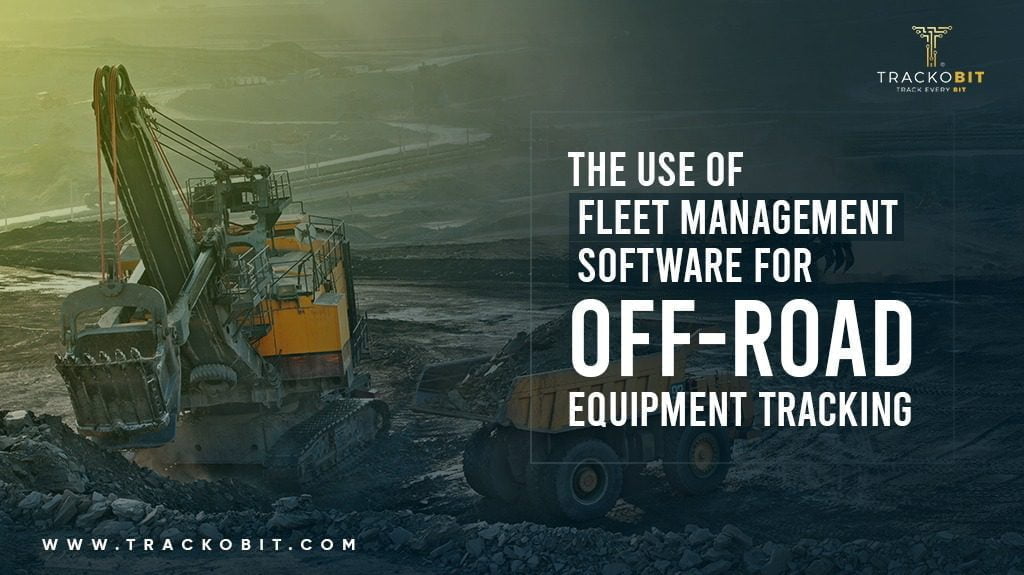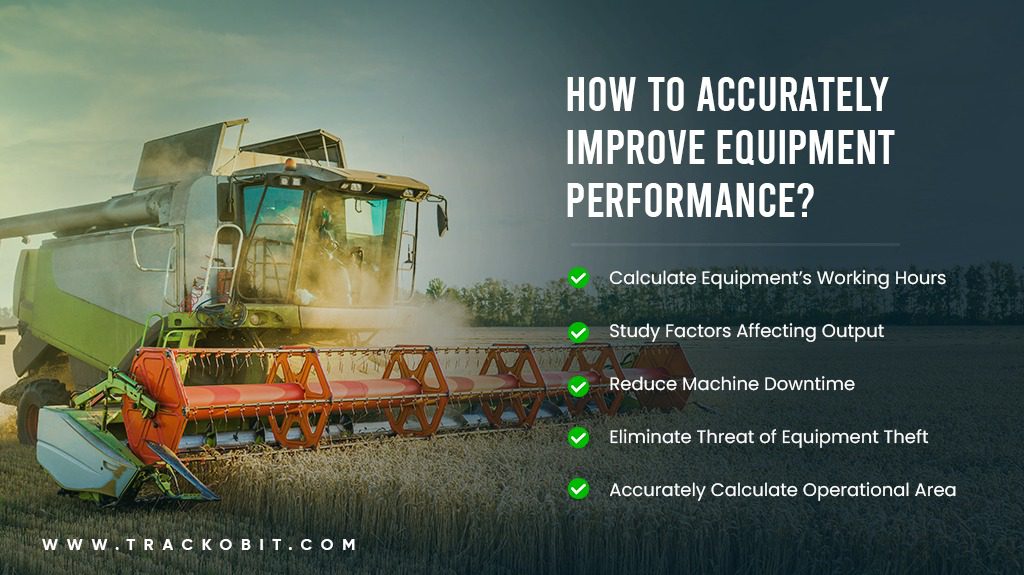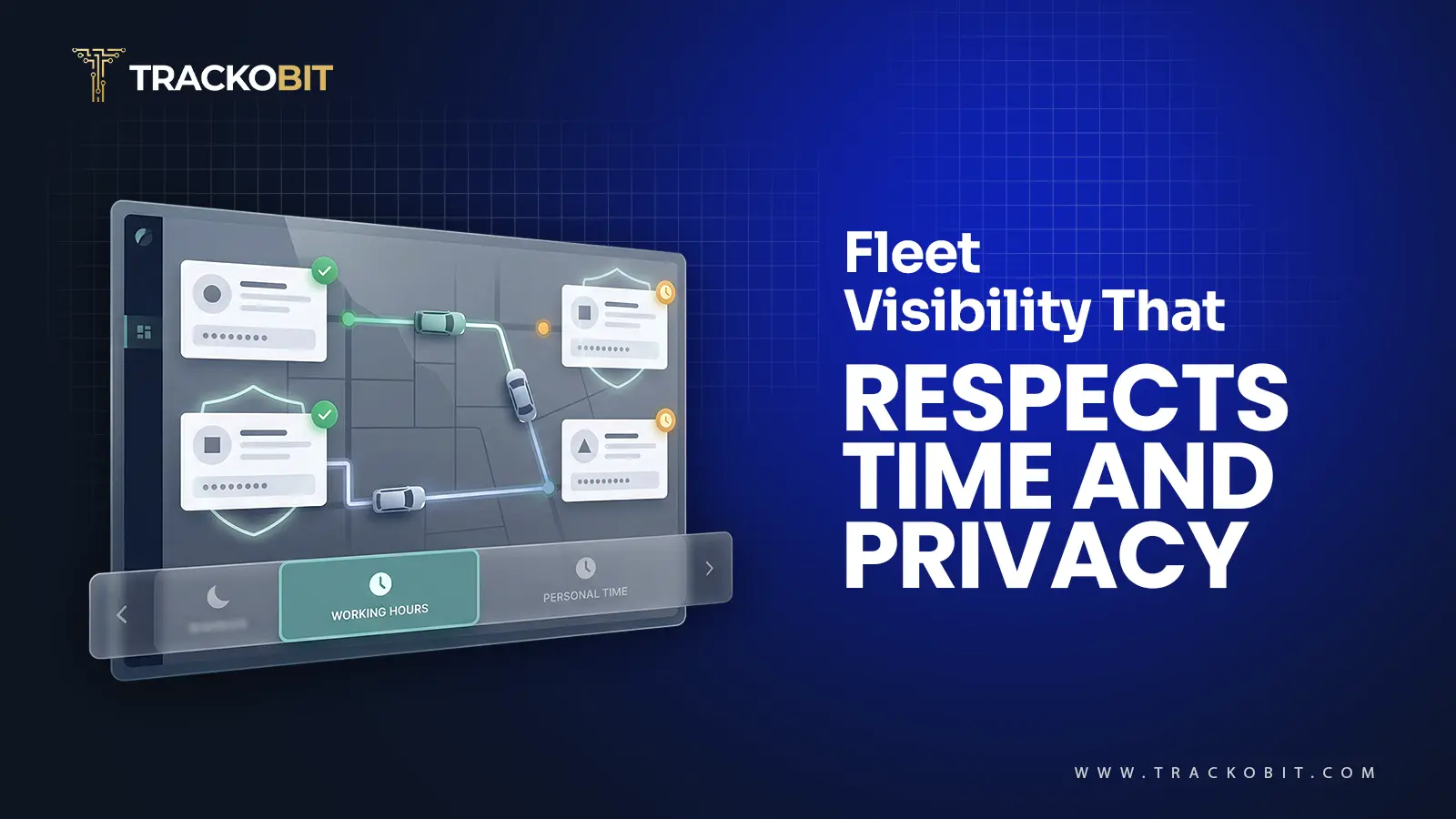-
TrackoBit
Manage commercial vehicles with the new-age Fleet Management Software
TrackoBit -
TrackoField
Streamline your scattered workforce with Field Force Management Software
TrackoField -
Features Resources
-
Blog
Carefully curated articles to update you on industrial trends. -
White Paper
Insightful papers and analysis on essential subject matters. -
Glossary
Explore an alphabetical list of relevant industry terms. -
What’s New
Get TrackoBit & TrackoField monthly updates here. -
Case Study
Explore the cases we solved with our diverse solutions. -
Comparisons
Compare platforms, features, and pricing to find your best fit.
-
About Us
Get to know TrackoBit: our team, ethos, values, and vision. -
Careers
Join the most dynamic cult of coders, creatives and changemakers. -
Tech Support
Learn about our technical support team and services in detail. -
Events
Check out the exhibitions where we left our marks and conquered. -
Contact Us
Connect with us and let us know how we can be of service.
Use of Fleet Management Software for Off-road Equipment Tracking
- Author:Drishti Dua
- Read Time:6 min
- Published:
- Last Update: February 4, 2025
Table of Contents
Toggle
Technology has been on the rise and advancements like IoT and quick access to connectivity have reformed several industries one business at a time.
Table of Contents
Toggle
Be it manufacturing or the transportation industry, interconnected operations have helped fleet management businesses become efficient and productive and also boosted the quality of their work.
The world of fleet businesses has been no stranger to this change as well. But while we are familiar with the potential of using telematics solutions for OTR operations of fleet businesses, there is a whole other side of the coin still unexplored. Yes, we are referring to off-road tracking! Let us learn what this industry has in store for us through this blog.
What is Off-road Fleet Tracking?
If we were to explain what off-road fleet tracking is in simple words, it is the use of IoT to track the location of equipment and vehicles used in an establishment. But with new technology tracking has taken a more 4-dimensional approach. It is no longer restricted to simple location tracking, but instead includes several other parameters including driver behaviour, vehicle diagnostics, and so on.
So what is telematics? And how does it operate to help the fleet businesses?
Telematics is a combination of two words, telecommunication and informatics. It refers to the long-distance communication of information. This can be between a device and a server, or even between multiple devices. It pillars the growing number of connected vehicles that we are witnessing in recent times, with connected commercial trucks predicted to reach 55% by 2025.
Parameters to Monitor For Off-road Equipment
It is almost a no brainer that the fleet businesses need to track their off-road machinery. But the question is, what are the parameters that need tracking when it comes to heavy duty equipment?
When managing a fleet business, the prime focus is always on profitability. This is why it is important that tracking of heavy-duty equipment also happens to keep this ideology in mind.
Location Tracking
On construction sites, managers can struggle to ensure that all their equipment is at its desired location. Even if we consider a different example, the situation remains the same. For agricultural businesses, managers need to ensure that their harvesting machines are working on the desired part of the field. Location tracking can also help farmers ensure that their cattle are not at risk of accidents from their machinery.
With manual management, determining the location of all the equipment – especially under a large-scale business, can be hard for drivers and technicians. It is a huge window for errors and inefficiency, affecting their productivity, safety and time efficiency.
Performance Tracking
As we mentioned above, the main purpose of fleet management is to ensure profits for the business. But this becomes a weak link for the fleet businesses when managers are unaware of their equipment’s performance status.
Wear and tear is a variable factor that might be affecting their fleet’s productivity. But managers cannot really do anything about their equipment depreciation if they do not have any data on what factors might be affecting it to begin with. Manually tracking the operations of every machinery working on sites sounds like a nightmare – and it is!
All these factors might seem like minor issues, but in a large scale fleet business, they cause heavy losses.

Maintenance Tracking
This brings us to the next parameter that fleet businesses need to track for effective and smooth operations – tracking the equipment’s health. While several fleet businesses have started creating maintenance schedules for their off-road equipment, it is their execution that lacks.
Irregular preventive and corrective maintenance can be the reason for not just their low performance, but also the business’ losses. This is why adopting automated scheduling alerts is the best way to eliminate such operational issues.
Working Hours Tracking
“How long is your equipment working for?”
When this question is raised for fleet managers using manual management methods, they might have an estimated figure of their machine’s working hours. But having just an estimate makes it hard to pinpoint any instances of overworking. This is why it is important for fleets businesses to brainstorm ways of calculating their accurate equipment working hours.
Accurate working hours calculation for equipment makes performance analysis a lot easier on managers. They do not have to manually track when their machine is working and when t is switched off, saving a lot of time.
Is Off-road Tracking Similar to On-road Tracking?
The set of operations that off and on-road fleets perform differ in many ways. This is why their management, challenges and requirements are also vastly different. But that being said, there are also some characteristics that both these fleets share with one another. Let us look at the similarities and differences between on-road and off-road fleet tracking.
Similarities Between On-road and Off-road Fleet Management
Here are some ways in which on and off-road fleets can resemble each other with their operations and requirements:
- Location Data: Though running separately, managers can often need to track their equipment the same way they track their vehicles. For example, for an agricultural fleet, managers have to track both their on-field machines and crop transportation vehicles.
- Performance Tracking: to maintain vehicles and equipment in good health, it is important that managers track their operations. Overworking machinery can raise the need for quick vehicle replacement. Having the hours of performance for machinery, be it on or off-road is essential.
- Servicing and Maintenance: Regular maintenance is the way that managers can not only promote longer vehicle and machinery life but can also reduce their replacement costs. Managers need to schedule both corrective and preventive maintenance regularly to achieve these goals.
- Fuel Tracking: Several fleet businesses rely on fossil fuels for their operations. But fuel wastage can end up becoming a profit guzzler for their business. This is why it is so important that managers track their vehicles and machines’ fuel consumption and look for ways to cut down costs.
Difference Between On-road and Off-road Fleet Management
Having a fleet consisting of both vehicles and equipment can be a challenge. This is because managers need to adapt their operations according to the nature of the fleet they are tracking or optimising. Some of the key differences in the management plan for both on and off road fleets are:
- Route Planning: For vehicles that have to run consistently to complete tasks, it is important that managers plan their routes beforehand to eliminate any kind of inconsistency. This is why route planning solutions should be very precise for on-road vehicles, keeping in mind the road conditions and traffic status as well.
- Working Hours vs Distance: For vehicles, managers have to track the distance they travel to ensure that they do go overboard and harm their health. On the other hand, for machinery that is stationary for most time, managers instead need to track their working hours. This can help them ensure that machines are not getting damaged.
Can Fleet Management Software Help Off-Road Equipment Tracking?
Automation is the new fuel for development. Adopting technological advances can help fleet businesses ensure that they do not have to face any kind of issues during their operations. Let’s look at some ways that fleet management software can help fleet businesses ensure efficiency:
- Asset Tracking Solutions: The GPS tracking software can help fleet businesses track the real time location of their machines. Thus, there is no way that managers can lose their equipment to theft or misplacement. They don’t have to pay for replacement or compensate for the lost production due to missing equipment.
- Fuel Management Solutions: Managers can not only track the real time fuel levels of their machines but can also track their consumption. They can ensure that the fleet business does not have to lose fuel to pilferage as well. The refill and drainage alerts ensure that managers know if there is any leakage in the tank as well.
- Geofences: Marking all the equipment with separate geofences ensures that if the machine gets displaced, managers will know. This is because the system alerts managers every time the equipment goes inside or out of geofence.
- Report Generations: Studying data is the best way for managers to eliminate wasteful activities from their operations. This is why the fleet management system can automate the data collection process and eliminate any kind of errors to make information more transparent and helpful.
Choose a Fleet Management Software That Does It All
Imagine having to settle for a fleet management system that limits its tracking parameters to on-road vehicles. Users of TrackoBit cannot relate!
TrackoBit is your one stop destination for all things monitoring. It can help your fleet businesses track both, on and off road machinery with similar accuracy. Fleet businesses can cut down their losses and boost productivity. The system can also help them maintain their machinery’s health for higher performance.
Drishti Dua, a Content Contributor at TrackoBit has a rich background in literature and professional expertise in SaaS and technology writing. She has carved her niche in the space of Geospatial techn... Read More
Related Blogs
-

When Tracking Needs a Clock: Rethinking Fleet Visibility
Tithi Agarwal December 24, 2025Read on to understand why fleet tracking works better when it follows working hours. Because visibility should support operations, not…
-

What Makes TrackoBit’s Video Telematics Software Truly Next-Gen?
Shemanti Ghosh December 17, 2025TrackoBit’s video telematics software blends smart video intelligence with full server control. The result? Superior fleet reliability and safety.
-

Plug, Pair, Perform TrackoBit Introduces BLE Sensor Integration
Tithi Agarwal November 26, 2025TrackoBit’s BLE Sensor Integration enables wireless, real-time monitoring with faster installs and accurate insights. It improves fleet efficiency, visibility, and…
-

How to Use Driver Behavior Reports as a Sales Hook to Close Big Fleets
Tithi Agarwal October 16, 2025TrackoBit’s driver behavior reports empower fleet providers to win big contracts by showcasing safety, efficiency, and measurable ROI.

Subscribe for weekly tips to optimize your fleet’s potential!
Your inbox awaits a welcome email. Stay tuned for the latest blog updates & expert insights.
"While you're here, dive into some more reads or grab quick bites from our social platforms!"Stay Updated on tech, telematics and mobility. Don't miss out on the latest in the industry.
We use cookies to enhance and personalize your browsing experience. By continuing to use our website, you agree to our Privacy Policy.


































